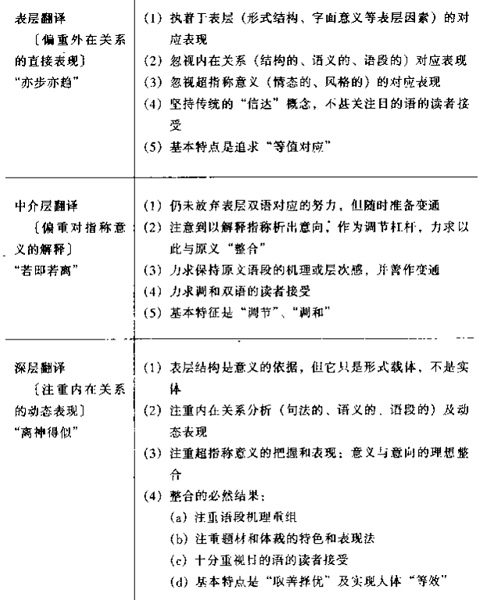- 签证留学 |
- 笔译 |
- 口译
- 求职 |
- 日/韩语 |
- 德语
理雅各的译文内容或有值得推敲之处,但他旨在摆脱或力图摆脱中国典籍翻译初期的表层翻译幼稚病是毋庸置疑的。这种以解释指称为主旨的翻译,基本上保持了原文的“机理”(组织层次)。我们称之为“中介层翻译”。再看《系辞》中还有一段文字,历来被视为儒家宇宙生成论的源头:
是故易有太极,是生两仪。两仪生四象。四象生八卦。八卦定吉凶。吉凶生大业。是故法象莫大乎天地。变通莫大乎四时。县象著明莫大乎日月。……
理氏的译文不仅工于涤除翻译中的浅表之见(止于从字面上解释指称是什么意思),而且对原语作了恰如其分的意向性释义(即意在研究说明什么),重视超指称意义。理氏的译文如下:
Therefore in (the system of ) the I there is the Grand Terminus, which produced the two elenentary Forms. Those two Forms produced the Four emblematic Symbols, which again produced the eight Trigrams. The eight trigrams served to determine the good and evil (issues of events),
and form this determination was produced the (successful prosecution of the) great business (of life). Therefore of all things that furnish models and visible figures there are none greater than heaven and earth; of things that change and extend an influence (on other ) there are none greater than the four seasons; of things suspended (in the sky) with their figures displayed clear and bright, there are none greater than the sun and moon;
“深层翻译”也称为“深层涵养翻译”,重在发掘“言下之意”和“言外之意”,总之是“超指称”成了译者的关注中心。我们可从小处看到理氏在翻译时很重视有意向参与的超指称意义:“一阴一阳”表示的不是搭配,而是运动,理氏译出来了。汉语中这种例子很多:“一前一后”、“一进一出”、“一开一关”,成语结构本身就有运动、发展意向的含蓄意义。对于深层意向把握,理氏非常慎重,不轻易以音译了事。例如“太极”他按意译舍音译。两汉时代刘歆、王充、郑玄都将“太极”理解为“元气”(如王充《衡论·谈天》:“元气未分,浑沌为一。”)。在唐代孔颖达以前,“太极”并无定义,《吕氏春秋》认为“太极”就是“太一”:“太一出两仪,两仪出阴阳,一上一下,合而成章。”据孔颖达的解释,“太极”就是“太初”(孔颖达《系辞传》正义),
所以理雅各将“太极”译成“Grand Terminus”是有道理的。
现在我们将表层翻译、中介层翻译与深层翻译的差异比较如下表:

中外翻译史上有许多例证说明,表层翻译与深层翻译是表现论问题,也是翻译价值观问题,而深层表现论的关健是(一)引入意向与意义整合;(二)确保语境的定型功能。执着于表层翻译的翻译家认为翻译理应符合原作的表层,因为原作的表层体现原作者的艺术匠心,这种不舍形式的艺术性的努力也不是没有道理的。
责任编辑:admin
